Three books are finalists for the New Zealand Book Awards for Children and Young Adults Te Kura Pounamu category, celebrating the best books in te reo Māori. Reviewing each of them for us is former teacher, gallery educator, librarian and student, Kay Benseman, along with her irāmutu.
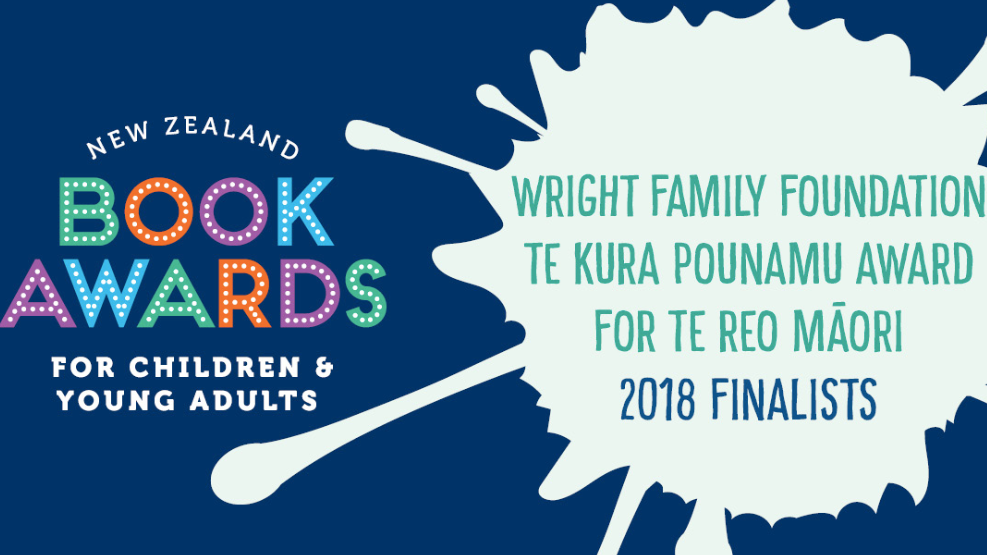
Joining me again, my irāmutu share their salient opinions on these te reo Māori publications which are finalists in the New Zealand Book Awards for Children and Young Adults. These three books are vying for the Wright Family Foundation Te Kura Pounamu Award for te reo Māori.
Hinengākau Cameron is 12 years old, her tungāne, Te Kaponga and Mangō-Ururoa are 9 and 6 years old respectively. Ko Ngāti Ranginui, Ngāti Rangiwēwehi, Ngāti Hinerangi ō rātou iwi. Nō Tauranga Moana rātou. Te reo Māori is their first language and as you will see, they are all discerning readers.
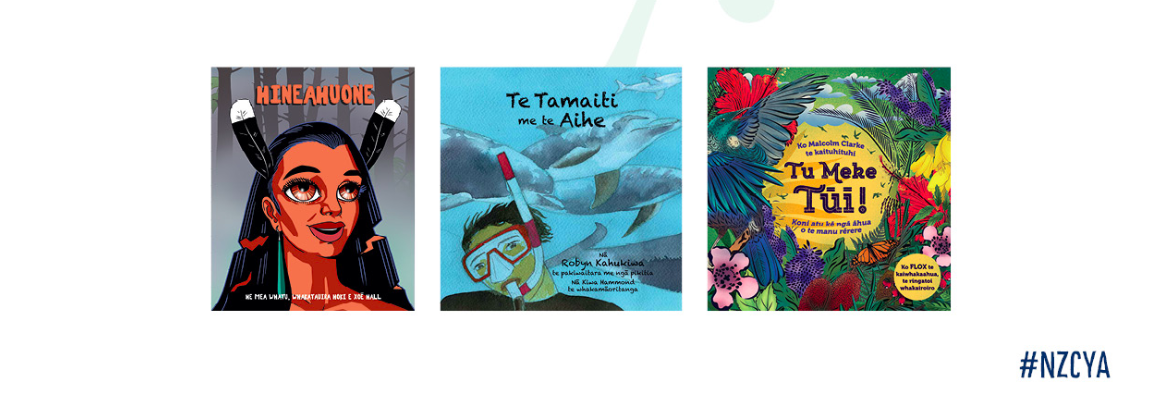
Tu Meke Tūī, nā Malcolm Clarke i tuhi, nā Evelyn Tobin i whakamāori
Hinengākau: He pai te reo. Engari he kino ngā ingoa Pākehā ki rō, nā te mea kua mōhio ētahi tamariki i te reo Māori anakē. He tino pai, kei te kōrero mō ngā manu tino rerekē kia ngana hei hoahoa. He tino kata ka ngana te tūī ki te whakaako i te rere ki te takahē.
Te Kaponga: Ka whakamārama te nuinga o ngā kupu ki roto i ngā pikitia. Kei roto i tētehi raru hoki, ko taua kararehe kai manu, ka āwhina te takahē.
Mangō-Ururoa: He kino ngā ingoa Pākehā i piri ki ngā ingoa Māori (“Stan”). He tino rawe ngā pikitia. He pai ngā kara o ngā manu me ērā atu. He pai te kaupapa o tēnei pukapuka, nā te katakata o ngā pikitia.
This book introduces readers to the particular strength of the takahē and also showcases the stunning artwork of Flox (Hayley King). Her glorious stencils more often grace walls than the pages of books but they really make this story zing. Visually, it’s a strong publication; the lush colours and shapes, along with the clever depictions of our native flora and fauna, have a really Pacific feel to them. White text on a dark background makes the typesetting accessible for readers with sight impairments, as well as bleary-eyed parents reading books at bedtime!
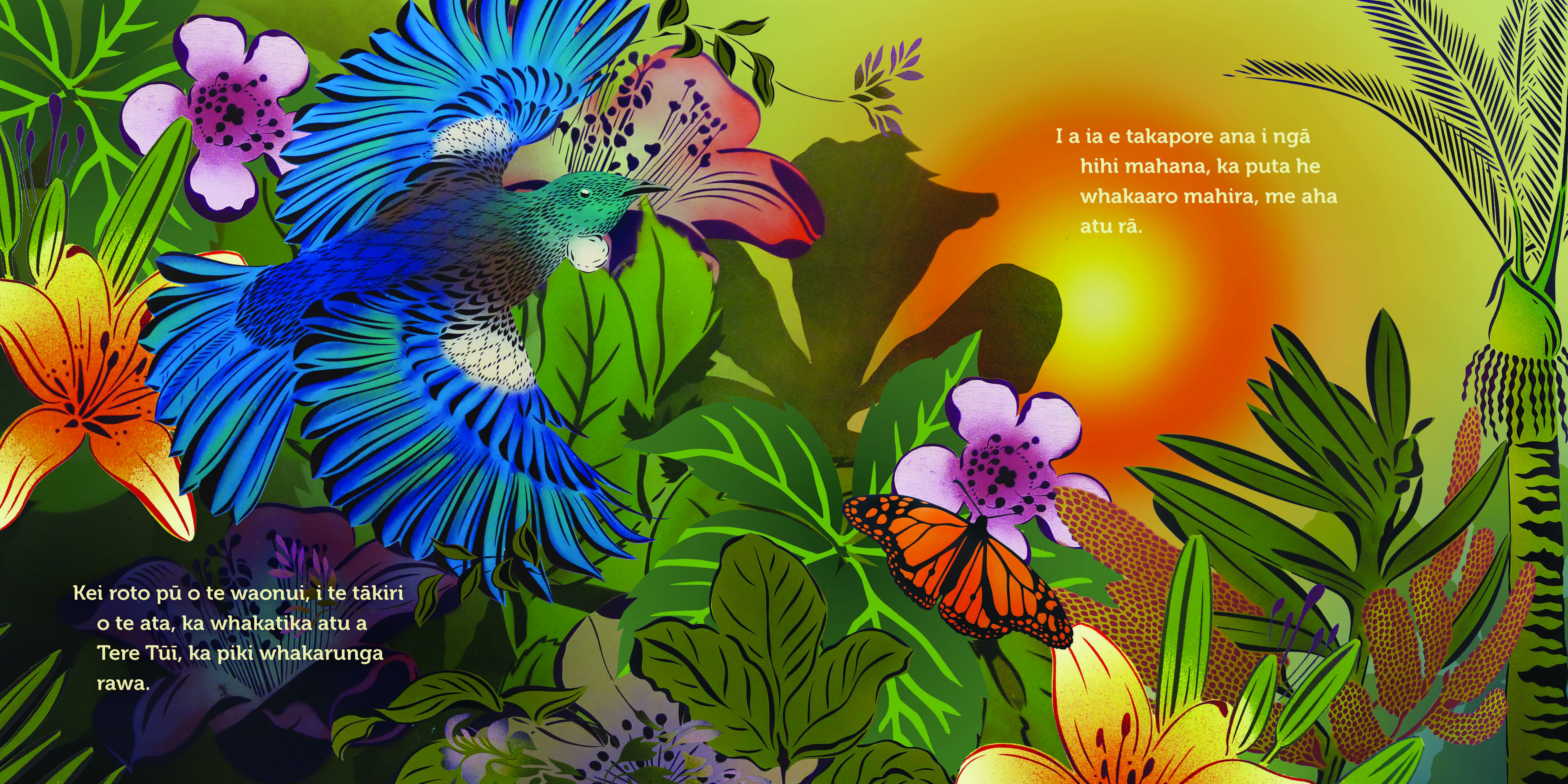
Linguistically, this is a lovely translation and really captures the phrasing of the original, introducing onomatopoeic lines like ‘ka kopakopa, ka kapakapa, ka korohi a Tere’ (‘with a flounce and a flutter, Tere tooted…’). This is a particularly challenging aspect of translating (as Ngaere Roberts recently discussed with Vini Olsen-Reeder) but it enables first language Māori readers to soak up delicious kupu and truly get a feel for the story.
Tu Meke Tūī includes a glossary as well as an activity page directing children to spot the native creatures hidden in the illustrations. Readers are also encouraged to learn more about our natural environment from Forest and Bird.
The story is described as ‘he paki hoahoa, ke paki mātātoa, he paki tūhura tonu kia ahatia ā tātou rerenga kētanga i roto i ō tātou mauri motuhake’ (‘this is a story of friendship, courage and discovering that sometimes it’s our differences that make us truly special’). An important theme to explore, for tamariki and adults alike, in this era of increasing diversity.
The vibrant, detailed images of this book provide the perfect backdrop to a fun tale, I found it enjoyable to read and share. It’s wonderful to see a New Zealand publication featuring our unique wildlife that is also translated into our indigenous language.
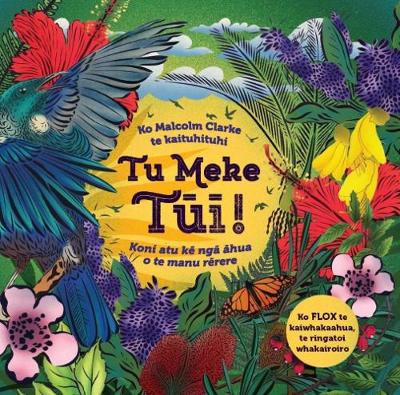
Tu Meke Tūī
Nā Malcolm Clarke i tuhi
Nā Flox ngā pikitia
Nā Evelyn Tobin i whakamāori
Little Love
RRP $20
Hineahuone, he mea whatu, whakatauira hoki e Xoë Hall, nā Sian Montgomery-Neutze i whakamāori
Hinengākau: He pai te reo nā te koi o te kaituhi Māori te hoki mai, hoki mai, hoki mai hei whakatika te reo. He rawe te mahi o Tāne Māhuta. He ātaahua. He āhua pai ngā patupaiarehe, ēngari he rēreke. Kāore au i te mōhio i ō rātou ira. He pai ki a au i te kaupapa nei, nā te whakatakoto o te oranga o te tāngata.
Te Kaponga: He tino ōrite te tuhinga ki te kaupapa o ngā whakaahua. Kei ngā patupaiarehe ngā parirau pūrerehua. He tipua. He āhua pai te kaupapa o tēnei pukapuka. He āhua rerekē, nā te rerekē ki ngā atu pukapuka i pānuitia e au mō te kaupapa nei.
Mangō-Ururoa: He āhua uaua, nā te mea he iti te nui o ngā kupu, ā, e maha ngā kupu. He rerekē te āhua o ngā tāngata. Kāore tērā i te āhua o te tāngata Māori tūturu.
Strong, eye-catching illustrations accompany this retelling of the ancient pūrakau of how the atua of the forest and birds, Tāne Māhuta, fashioned the first human female out of clay.
It’s great to hear a new take on this story which, to my knowledge, hasn’t been published as a children’s picture book before now. It’s a complex tale to tell if you delve any deeper than Xoë Hall has, happily she ends this version before things get any more brutal.
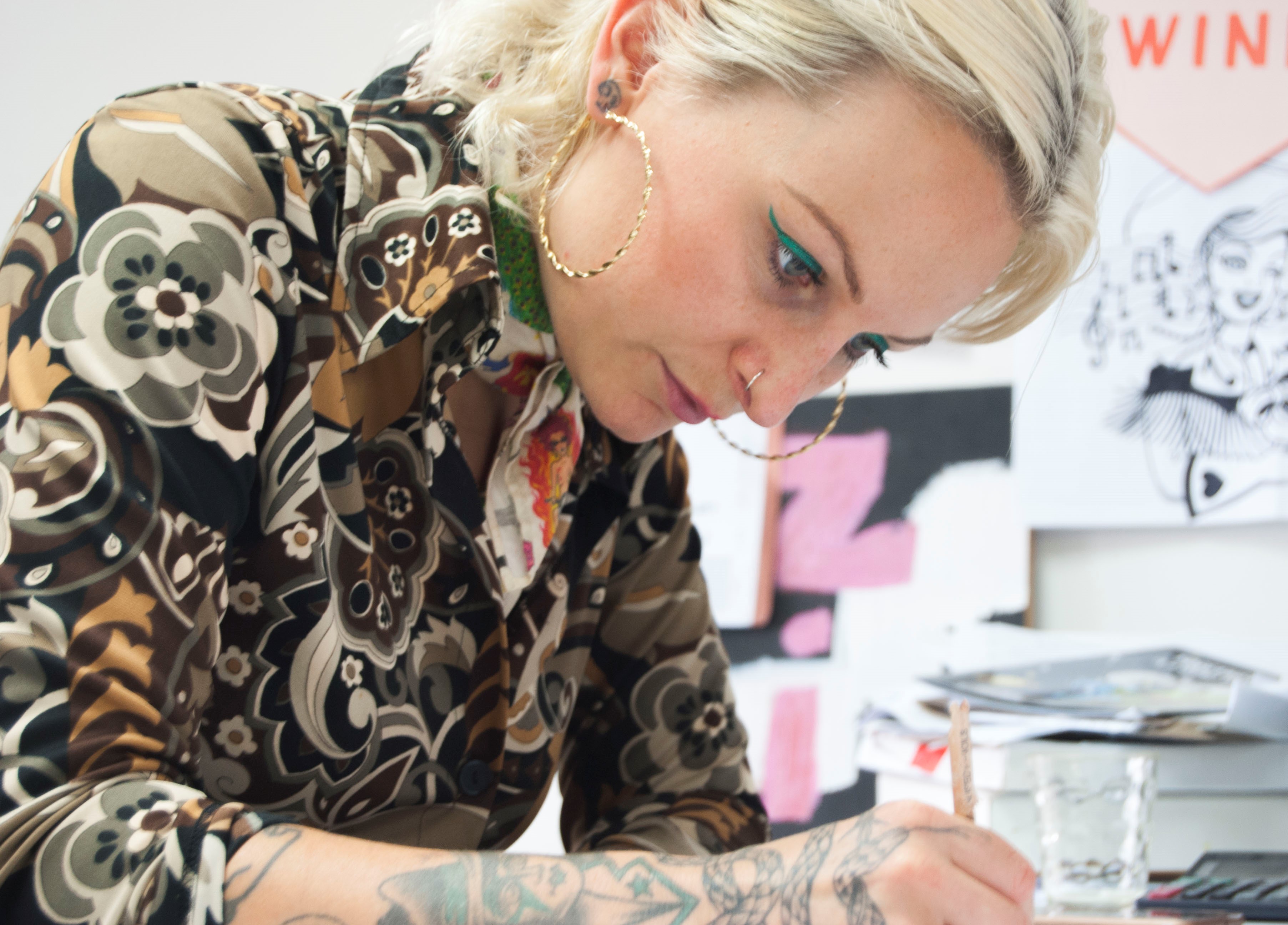
This book is also missing some macrons, which may not seem significant, but it really does make a difference to any speaker of te reo Māori. Not only to the reader’s correct pronunciation of the kupu, but also in their meaning; for example, ‘keke’ is cake and ‘kēkē’ is armpit – an important difference!
I felt that this te reo Māori version was a bit long and wordy for younger children but perhaps the Manga-esque illustrations will already give it appeal to older readers.
A feature I really liked was the space on the flyleaf for tamariki to name their new book; ‘Nā _______ tēnei pukapuka’, I can imagine many happy new owners of this pukapuka carefully filling this in. Hineahuone is shortlisted for the 2018 Book Awards for Children & Young Adults Te Kura Pounamu Award.
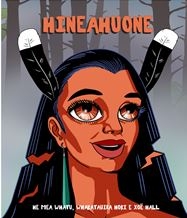
HINEAHUONE
He mea whatu, whakatauira hoki e Xoë Hall
Nā Sian Montgomery-Neutze i whakamāori
TeacherTalk
RRP $20
Te Tamaiti me te Aihe, nā Robyn Kahukiwa te pakiwaitara me ngā pikitia, nā Kiwa Hammond te whakamāoritanga
Hinengākau: He tika katoa te reo. He pai te tuhinga roa ki a au. He pai te kōrero mō te hononga o te tama me te aihe, ka āwhina te aihe ki te tama i whakaekengia e te mako. He pai te whanaungatanga.
Te Kaponga: He pai te kaupapa nā te mea ka āwhina ia ki te aihe, kātahi ka āwhina te aihe ki a ia. Awhi mai, awhi atu. He āhua pai ngā pikitia, engari ka kite tonu i te pene rākau kei ngā tahataha.
Mangō-Ururoa: He pōuri i te wā ka mamae te aihe. He tika ngā karakara o ngā kararehe me te tangata. He pai te toi ki a au.
Robyn Kahukiwa weaves a story about a boy who saves and then befriends a dolphin, depicted in watercolours. While the artwork lacks some of the immediate impact and verve of a more brightly illustrated book, I think that this is appropriate for a story that is set almost entirely underwater.
This book communicates a strong environmental message about our relationship to Tangaroa and his tamariki, seeing sea creatures as our tuākana. We are shown examples of both kaitiakitanga and koha in this story; the boy takes action to protect the dolphin and in return, the dolphin begins to bring him kaimoana to show its appreciation. We encounter only one human character, the boy who grows into a young man throughout the story and while my ocean-obsessed preschooler loved this picture book, I think the length suits the attention span of an older child.
With a happy conclusion, Te Tamaiti me te Aihe might be a helpful read for any tamariki who are particularly concerned about the state of our oceans at present.
I don’t know of any other children’s books translated by Kiwa Hammond and this is an excellent inaugural publication; poetic and descriptive. Always looking to build my vocabulary, I found a kupu hou; ‘taumauri’, that has since become an important part of our whānau lexicon! However, it was disappointing not to find a glossary included.
It is worth noting that this book is beautiful to hold, the quality of the paper and the printing is tangible. I’m reminded that gathering together my tired children to turn lovely pages is a wonderful way to close the day.
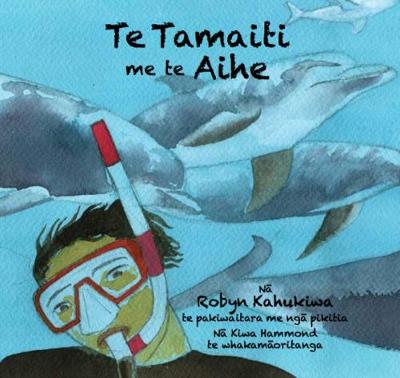
Te Tamaiti me te Aihe
Nā Robyn Kahukiwa te pakiwaitara me ngā pikitia
Nā Kiwa Hammond te whakamāoritanga
Little Island
RRP: $26

Kay Benseman
Kay Benseman (she/her) is a collector of quirky children's books and kupu hou. In the 90s, she worked in a bookshop and had a 40% staff discount, and her bookshelves have never recovered. With a background in education and the cultural sector, she is now a writer/researcher and Māmā to two curious children. He tāngata Tiriti ia, Kay is Pākehā living on Ngā Rauru whenua in Whanganui.



